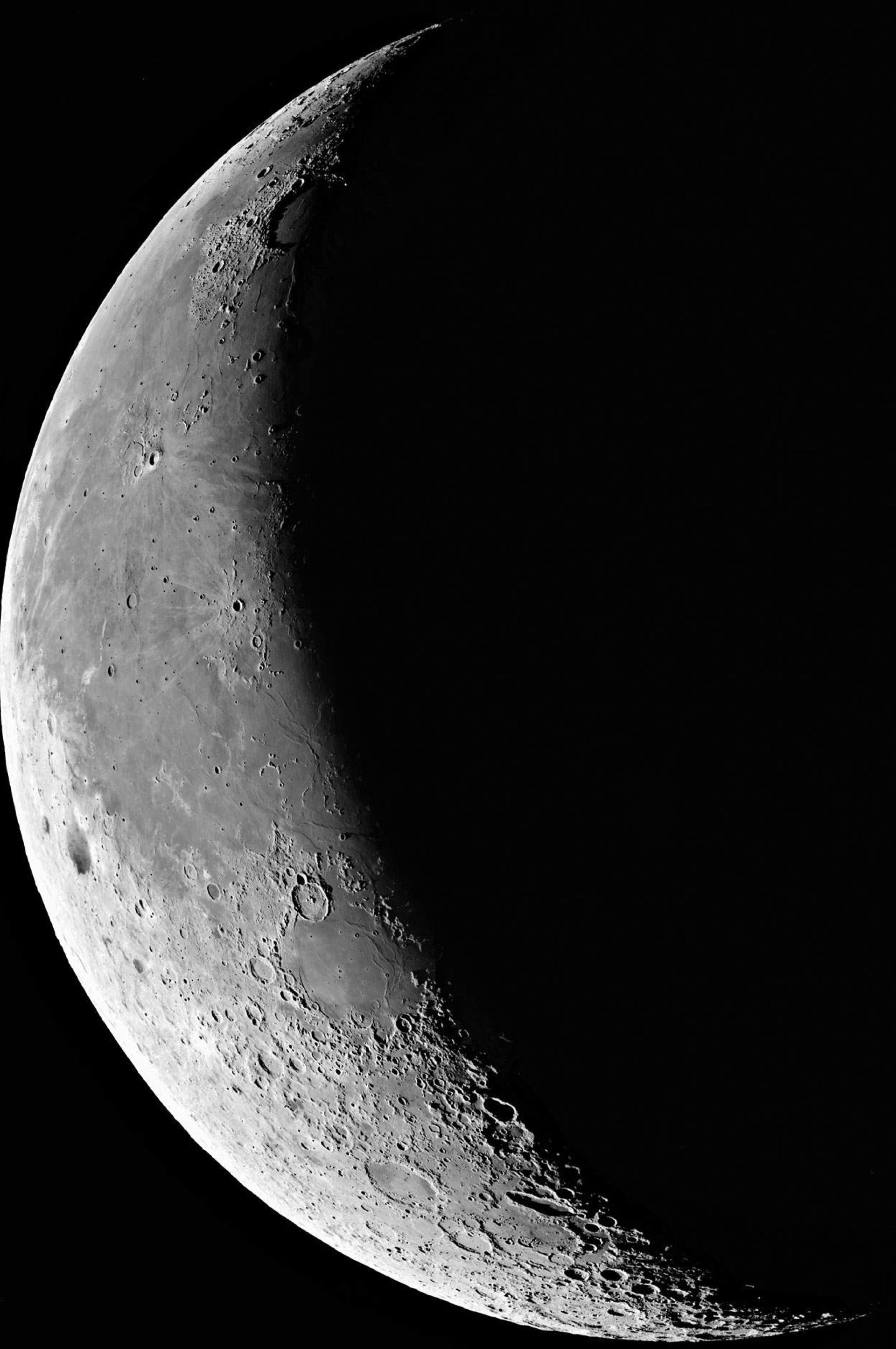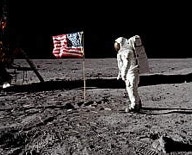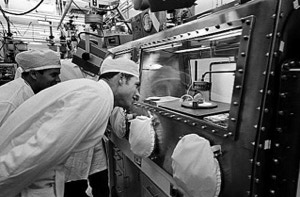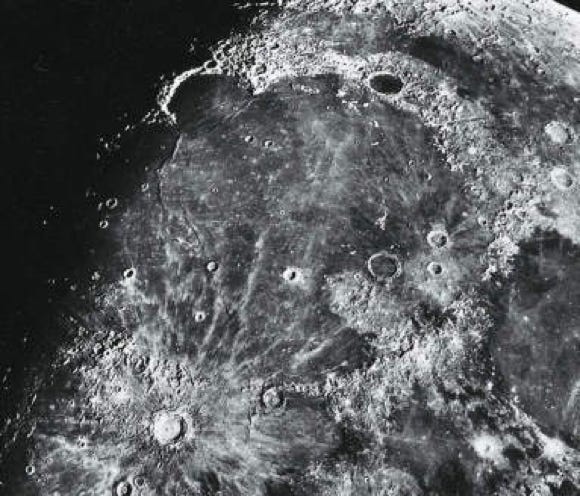

Exploring the Moon
A history of lunar discovery from the first
space probes to recent times
What did we learn from Apollo?
In a secure facility at the Johnson Space Center in Houston, Texas, sits the most tangible results of the Apollo lunar missions – 380 kg of lunar samples held under sterile conditions for study by current and future researchers. What have we learned from these?
One major question that scientists had hoped the Apollo missions would answer was how the Moon formed. Was it originally a separate body that was captured? If so, its composition would be quite different from that of the Earth. Or were the Earth and Moon formed side by side? In that case they would be very similar in composition. As it turns out, there are similarities in composition between the Moon and the Earth, but there are also enough differences to show that the Moon must incorporate material from another body which has now vanished.
The currently accepted theory for the Moon’s origin, usually called the Giant Impact hypothesis, envisages that the Earth was hit by a stray body about half its size while it was still very young. Debris from the collision was thrown out around the Earth and collected together to form the Moon. On this scenario, some of the Moon comes from the impactor and some of it from the Earth. The collision is thought to have happened no more than about 50 million years after the Earth was formed, which fits with the age of the oldest rocks brought back by Apollo.
Since the material thrown off by such a huge impact was very hot, the Moon started out with a molten outer layer called the magma ocean. This cooled over a period of 100 million years or so to form the first crust – and that’s what the Apollo missions spent so much effort trying to find samples of.
Around 4 billion years ago came a series of large impacts from debris remaining in the Solar System, called the late heavy bombardment, which excavated the large basins that then filled with lava over the next few hundred million years to form the dark lunar seas.
Since then, really nothing very much of importance has happened over the past 3 billion years, apart from the occasional impact which blasted out prominent craters such as Copernicus, seen at lower left of the picture.
Click for a list of the Top Ten scientific findings from Apollo.

Apollo 15 astronaut David Scott examines the so-called Genesis Rock
What did we learn from Apollo?
The impact crater Copernicus (lower left of picture) on the Mare Imbrium is about 800 million years old, yet it is among the youngest of the Moon’s major features
